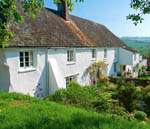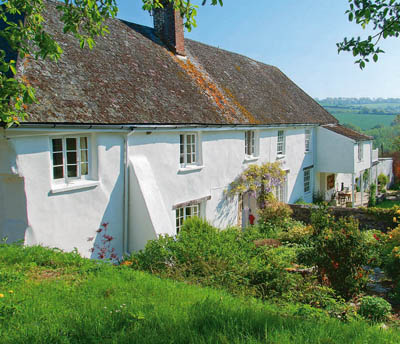The investment appeal of a sporting estate
Anna Tyzack looks at the market for sporting estates, only a few of which come to market every year


Forget the recession-buyers are still queuing up to acquire Britain's treasured sporting estates. The ‘classic' sporting estate, with a profitable shoot and a decent house, has outperformed every other type of country property this year, according to Crispin Holborow of Savills-and prices are still climbing. ‘A good sporting estate is the rarest beast of the country market-only a handful come up for sale each year,' he explains. ‘When the right one comes up, buyers act immediately, whatever the economy is doing.'
In its purest form, a sporting estate derives the majority of its income from shooting and there-fore has hospitality facilities and full-time staff. Mark McAndrew of Strutt & Parker defines it as having more than 10 days' shoot-ing a year and bags of more than 200 birds. ‘Technically, anything else is a country estate.'
Ed Sugden of Property Vision agrees that only a couple of genuine sporting estates come on the market each year, with a handful of other exceptional all-round country estates, which offer ‘a bit of everything': a shoot with good topography, fishing rights and agricultural land. ‘You should expect to pay more than £10 million for a property with all those.'

One upside is that sporting rights can provide a valuable income stream, although most owners don't see a substantial profit from their commercial shoot, according to Mr Sugden. ‘Usually, it's a case of your commercial days paying for your private days if you operate on a ratio of two-thirds commercial days to one-third private.' Rental values of sporting rights range from £8 to £18 per acre depend-ing on topography, the number of drives and the positioning and size of woodland, and let days can be sold for about £34 per bird (plus VAT) with an esti-mated 300-350 birds per day.
But for anyone keen on shoot-ing, the investment appeal of a sporting estate is in its acreage, rather than the sporting rights; land prices are currently up to £7,000 or £8,000 per acre, according to Andrew Pearce of Chesterton Humberts. Over the past decade, British buyers have been joined by overseas investors, particularly from Russia, Scandinavia, Eastern Europe, China and America. ‘They see land as a good investment and know that country sports-and sporting estates-are something the British do particularly well,' says Mr Sugden. ‘The conditions and the geography are perfect; estates in Spain, Germany and France all try to emulate them.'
The most sought-after estates comprise a single block of land, uncrossed by main roads, power lines or aircraft. ‘The finite supply of land in the UK has underpinned the market,' explains Dawn Carritt of Jackson-Stops & Staff. ‘The number of former estates that were broken up at the end of last century means the opportunity to buy 1,000 acres or more in a single block has become increasingly difficult.'
Many overseas investors will pay a premium for a sporting estate within striking distance of London airports, but they won't necessarily get the best sporting conditions for the price. For stalking, Scotland and south-west England (where roe deer are found) are the most sought-after locations, according to Miss Carritt; and Devon, together with Wiltshire, Berk-shire and part of West Sussex, have the best topography for pheasant and partridge shooting. For grouse moors, North Yorkshire is currently the most fashionable location-prices have risen considerably over the past few years, according to Mr Holborow-although Cumbria, Durham and Scotland are also highly regarded. There is also rising demand for estates with wetlands for wildfowling and those offering woodcock.
Exquisite houses, the beauty of Nature, and how to get the most from your life, straight to your inbox.
According to Mr Sugden, about half a dozen top sporting est-ates are quietly available ‘off market', but the pick of the crop on the open market is the Hod-dington estate at Upton Grey, near Basingstoke, in Hampshire, which has a 12-bedroom house, 10 cottages and a renowned shoot (£20 million through Knight Frank, 020-7861 1440, Country Life, July 27). Less expensive is the Holywell estate near Stam-ford in Lincolnshire, a Georgian house with almost 1,000 acres and a pheasant shoot (£14.75 million, Bidwells, 01223 559352, Country Life, August 31).
Those after a lower-budget property with a family shoot-a ‘lifestyle' farm-have much more choice, although the market has been slower this year, according to Mr Holborow. ‘Sport-ing rights might protect the value of a property, but they don't necessarily add to it,' he says. ‘Many of the lifestyle farms on the market would fly off the shelf if they had 1,000 acres.'
* Give Country Life for Christmas and save up to 40%
Country Life is unlike any other magazine: the only glossy weekly on the newsstand and the only magazine that has been guest-edited by His Majesty The King not once, but twice. It is a celebration of modern rural life and all its diverse joys and pleasures — that was first published in Queen Victoria's Diamond Jubilee year. Our eclectic mixture of witty and informative content — from the most up-to-date property news and commentary and a coveted glimpse inside some of the UK's best houses and gardens, to gardening, the arts and interior design, written by experts in their field — still cannot be found in print or online, anywhere else.

